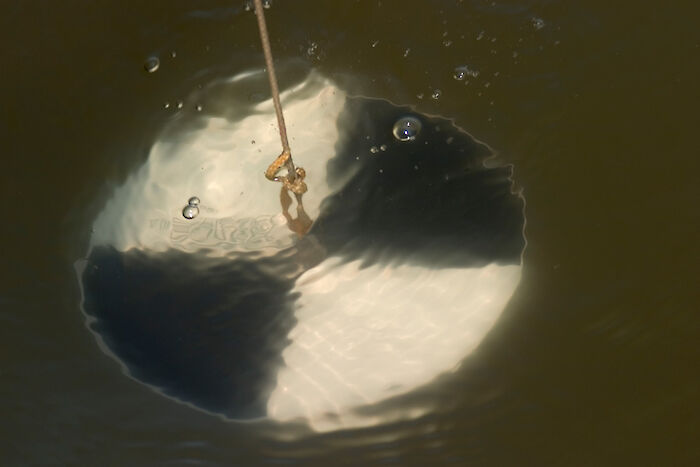
Water clarity is a measure of how much light penetrates though the water column. Water clarity is dependent upon the amount of particles (e.g. suspended sediment and plankton) and colored organic matter present. Clear water is especially critical for seagrasses since, like all plants, they need to be able to absorb the sun’s rays to grow. Excess sediment in the water reduces water clarity by blocking sunlight to seagrasses. Fish and other organisms in the water need aquatic grass habitat to thrive.
How is it measured?
Water clarity was measured at approximately 159 stations up to 11 times during the periods of interest (April to October in the tidal fresh, oligohaline and mesohaline regions, and March to November in the polyhaline regions). Secchi depth is the water depth (in meters) that you can just differentiate black and white quarters of a Secchi disc lowered into the water. The proportion of time that water clarity was below the threshold at each station was calculated and then spatially averaged into reporting regions.
2024 bay data provided by the Chesapeake Bay Program and accessed through the DataHub application: https://datahub.chesapeakebay.net/WaterQuality
Threshold levels
| Salinity Regime | Season | Relative Status Thresholds (m)* |
|---|---|---|
| Tidal Fresh | Apr-Oct | ≥0.85 |
| Oligohaline | Apr-Oct | ≥0.65 |
| Mesohaline | Apr-Oct | ≥1.63 |
| Polyhaline | Mar-Nov | ≥2.0 |
* Lacouture et al., Estuaries and Coasts (2006) & Buchanan et al., Estuaries (2005)
